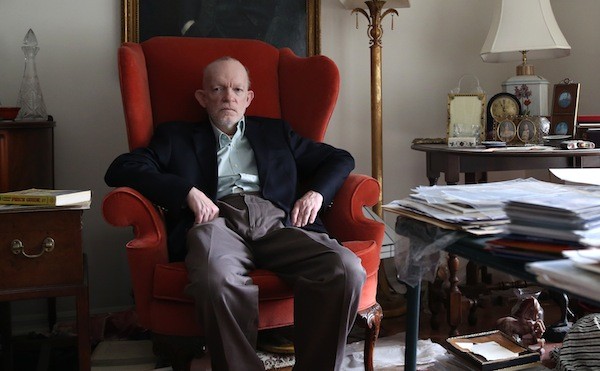
Tess (1979; dir. Roman Polanski)—Pretty soon, I’ll have to figure out—excuse me, “reveal”—my Top 10 movies of 2014. But this task always reminds me that, regardless of quality, there are just too many movies released in theaters every year for an amateur like me to see. (And let’s not talk about the Wild West of VOD, although its importance as both exhibition platform and moneymaker is growing.) Unless you’re really on top of your game, even the most promising movies can sneak out of town under your nose. This happened to me with Roman Polanski’s Venus In Fur a while back. Flyer Film/TV editor Chris McCoy reviewed it and really liked it. But when Venus In Fur showed up at my local theater I missed my chance to see it, so I got my Polanski fix by watching his gorgeous adaptation of Tess of the D’Urbervilles, Thomas Hardy’s 1891 novel about ruined families, lost legacies, creeping industrialism and crushing female degradation. Polanski meets Hardy’s “oblivion almost inconceivable in its profundity” head-on, in part because his widescreen framing and production design are as well-designed as Hardy’s prose and in part because he gets a strange, unnerving performance from a lead actress (Natassia Kinski) for whom English is a second language. It’s almost as though Polanski took a line from the book and made it his credo: “And it was the touch of the imperfect upon the would-be perfect that gave the sweetness, because it was that which gave the humanity.” Grade: A+

Art and Craft (2014; dirs. Sam Cullman, Jennifer Grausman and Mark Becker)—According to Mark Landis, it’s easy to make new paintings look like old ones: just pour a little instant coffee on them. He should know: the soft-spoken, stoop-shouldered Landis spends his days copying paintings and sketches he loves. That’s just the beginning of his hobby, though. His affectionate forgeries lead to “philanthropic binges” which involve him dressing up like a grieving relative (or, in some cases, a priest) and donating his imitation artworks to local museums. Landis is an ingratiating and talented prankster with significant mental health issues but without a trace of malice; he could be one of Robert Crumb’s long-lost siblings. He means no apparent harm, but that isn’t to say the local art museums he fools are happy about what he does. Art and Craft is first and foremost a slow and steady portrait of Landis, but it is also a portrait of former museum employee Matt Leiniger, who has made it his life’s mission to track this bony old fraud down and bring him to justice. There’s a catch, though: there isn’t any justice to bring him to. Landis hasn’t committed a crime, and he doesn’t make any money for his efforts. As the film meanders towards Leiniger’s confrontation with Landis at an exhibit of Landis’ work, the looming sense of anticlimax is as satisfying as a more explosive and conventional confrontation. Grade: B+

Valerie and Her Week of Wonders (1970; dir. Jaromir Jiles)— Flyer commenter “Coffell Scruggs” (did we go to high school together, C.S.?) suggested this movie last month, and although I couldn’t stay up late enough to catch it when it originally aired on Turner Classic Movies in the wee wee hours, I took advantage of TCM.com’s Movies On Demand feature and saw it a couple days later. (N.B.: TCM.com is the one of the better free movie sites out there. Seriously, I wouldn’t be offended if you clicked over there right now and watched Buster Keaton’s The Navigator. In fact, I’d be flattered.) I’m not sure what Jiles’ film is about, exactly—it’s full of sexual awakenings, occult rituals and mystical showdowns captured from cameras that appear to be perched in treetops and church belfries—but it’s got the morbid kink of an Angela Carter fairy tale, and the deep, barrel-aged color effects please the eye and the soul. Grade: A-

Adieu Au Langage (Goodbye to Language) (2014; dir. Jean-Luc Godard)— I really hope you get a chance to see Godard’s new movie in 3D. No joke: it’s the best movie of the year, and it’s so refreshing that you should plan a vacation around seeing it wherever it plays next. Like Jacques Tati’s PlayTime, if you accept its challenges and embrace its difficulties, it will change the way you see the world. (And if you walk out scratching your head, don’t lose faith: there’s already a ton of great scholarship and analysis online. Start with David Bordwell’s lengthy appreciation and follow the links.) Like many later Godard films, Adieu Au Langage is both a fairly coherent statement and a protean sketchbook of short films and scenes covering a wide range of subjects: dogs, old VHS images, color, language, philosophy, nature, canted framing, optical illusions, books, female nudity, and, uh, poop jokes. (You heard me. Poop jokes.) I wanted to see this all three times it played at the Walker Art Center, but I only made it there once. Still, what I wouldn’t give to re-experience the remarkable shot involving two 3D cameras that split and merge so that you see superimposition, split-screen and 3D simultaneously. Apparently when people saw this shot at Cannes they lost their marbles. Distribution and difficulty be damned; why deprive others of such spontaneous joy and wonder? Grade: A+

Mr. Dynamite: The Rise of James Brown (2014; dir. Alex Gibney)—This HBO documentary, which covers Brown’s life and career from 1962-1974, is the perfect complement to Tate Taylor’s excellent biopic Get On Up. It contains more (and better) music than Taylor’s film, too. And it does much more than verify Get On Up’s surreal scenes at the famous Boston show Brown played the night after Martin Luther King Jr.’s assassination. It partially explains why Brown gave a shout-out to Hubert Humphrey when I saw him perform in Duluth in 1996, and it also explains Brown’s affection for Richard Nixon. But mainly it gives the band a chance to talk back. Their affectionate reminiscences overshadow the film’s many knowledgeable commentators and musicians, and it turns Mr. Dynamite into a gossipy mosaic. I mean, wouldn’t you like to hear Bootsy Collins tell stories about James Brown’s tacky shoes and his inability to tell a joke? Wouldn’t you like to hear drummer Clyde Stubblefield explain why he hates “Funky Drummer”? Wouldn’t you like to know why Maceo Parker’s brother once put the barrel of a revolver up Brown’s nose? And wouldn’t you like to hear some more of that music again? Grade: A-


